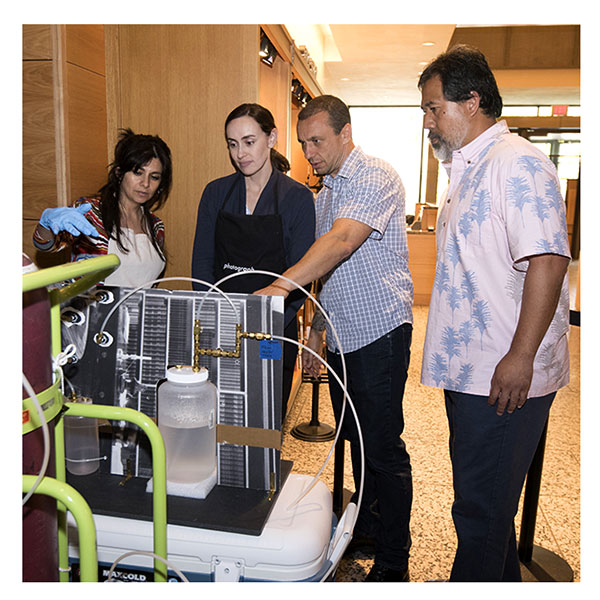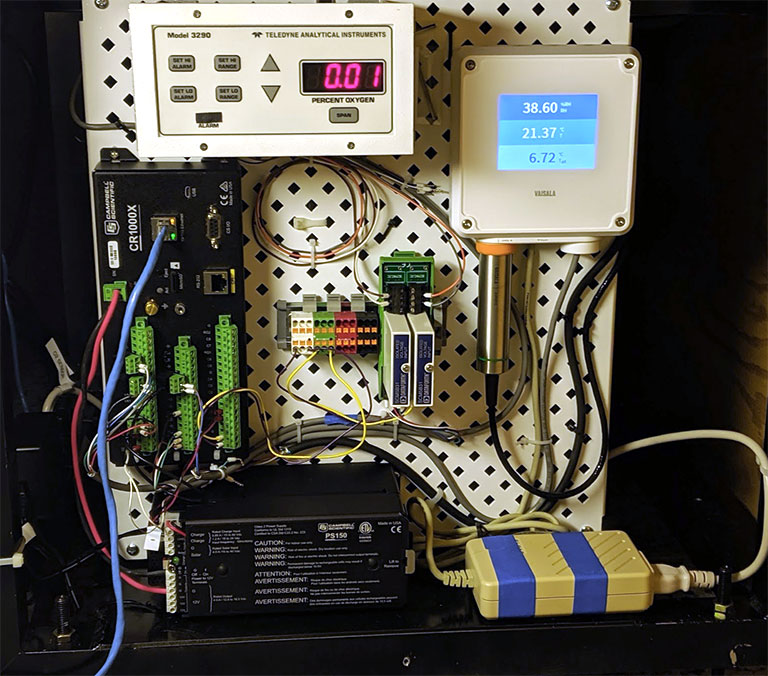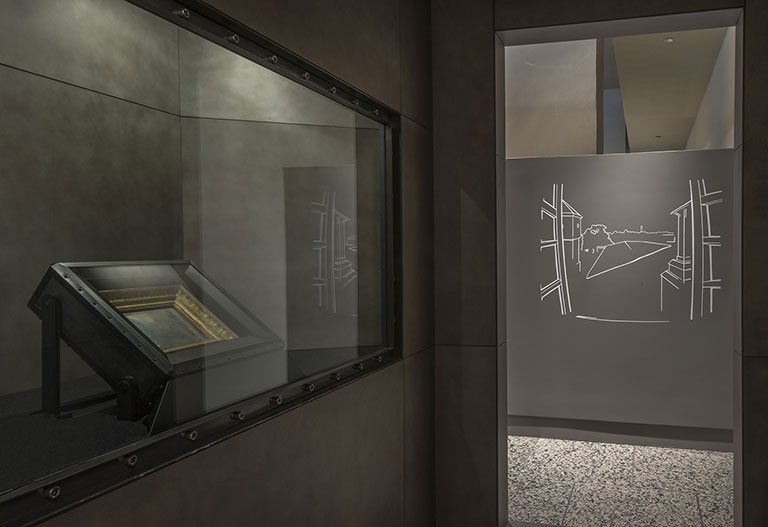
In partnership with imaging specialists and conservation scientists across the country, in summer 2019, the Harry Ransom Center undertook a project to ensure the longterm preservation of The Niépce Heliograph, the earliest known surviving photograph made with the aid of the camera obscura.
The project had two primary goals: update the environmental monitoring system for the special case in which the heliograph is enclosed, and evaluate the current condition of the photograph itself. Here we discuss updates to the monitoring system, and the analysis of the heliograph’s condition will be in a future post.
The conservation field has in recent decades created specialized environments for items as unique and culturally significant as The Niépce Heliograph. In 2002, the Center partnered with Getty Conservation Institute (GCI) scientists to design an oxygen-free display system, which the GCI constructed in its facility in Los Angeles. The case, which is hermetically sealed, is filled with argon, an inert gas that protects the heliograph and its wood frame from the direct and indirect effects of oxygen-induced deterioration.

The complete support system for maintaining the heliograph’s argon environment is hidden away underneath the public-facing display. The system consists of sensors (for oxygen and temperature/humidity) and a pressure transducer (to maintain the case’s atmospheric equilibrium) attached to the back of the heliograph’s case. These components are then attached to a datalogger that continuously monitors the case’s environment for any changes. The argon atmosphere in the case is maintained by the use of humidity conditioned silica gel and Art-Sorb™ sheets. Activated charcoal is also placed in the case, as part of the Art-Sorb™ sheets, to protect the heliograph against possible off-gassed products from the case’s construction materials and the heliograph’s wood frame.
This environmental system requires maintenance and upgrading from time-to-time. This summer, the Center’s preservation and conservation staff replaced and updated all of the system components. As is the case in much conservation work, conservators collaborated with scientists, engineers, and technicians to undertake the project. To purchase a new datalogger (a CR1000X), the Ransom Center contracted with Campbell Scientific (CS). CS support and implementation engineer Karl Lambert worked onsite for two days wiring the system, programming the logger’s software (Loggernet) sensor wiring, and ensuring environmental data transmission to a monitoring computer in the Center’s Photo Conservation Lab. Technology has certainly advanced since the original datalogger was installed in 2004. The new logger’s software has the capacity to alert conservators via cell phone should the case’s environment exceed established environmental parameters.

To complete the project, two colleagues from the Getty Conservation Institute came on site for three days to consult with conservators and assist in the assembly and preparation of the case’s environment for re-installation in the Center’s public display on the first floor. Vincent Beltran and Art Kaplan, GCI scientists specializing, respectively, in environmental systems and photographic materials, worked with Ken Grant, senior paper conservator, Diana Diaz Cañas, senior photo conservator, and Heather Brown, photo conservator, to calibrate the sensors and purge the case (twice) with argon to establish the perfect “passive” environment for the heliograph’s preservation.

Now that the new system is in place, the only short-term maintenance required is annual recalibration of the oxygen and temperature/humidity sensors. Unless some component of the system fails and the case’s environment breaches the established parameters, the case will not require new argon for another ten years.
The Ransom Center wishes to thank the Getty Conservation Institute for their generous collaboration on this important project.
Top image: Diana L. Díaz-Cañas and Heather Brown of the Ransom Center work alongside Art Kaplan and Vincent Beltran of the Getty Conservation Institute to create proper environmental conditions for the Niépce Heliograph inside the exhibit case.